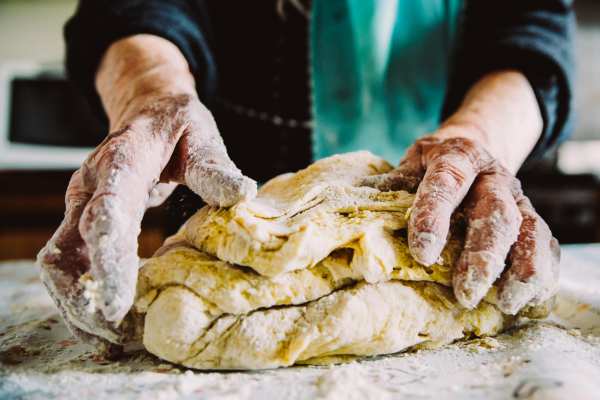Italian pasta is renowned worldwide for its delicious taste, perfect texture, and timeless appeal. But what is the secret behind the exquisite quality of Italian pasta? This article delves into the intricate process of pasta making in Italy, exploring the traditional techniques, ingredients, and cultural significance that contribute to its exceptional quality.
The Art of Pasta Making
Tradition Meets Craftsmanship
Italian pasta making is an art form steeped in tradition. Each region of Italy has its own unique pasta varieties and techniques, passed down through generations. The craftsmanship involved in making pasta is a testament to the Italian dedication to preserving culinary heritage.
The Role of Ingredients
High-Quality Wheat
The cornerstone of Italian pasta is the wheat used. Durum wheat, known for its high gluten content, is preferred for making pasta. This type of wheat ensures that the pasta maintains its shape and texture during cooking. Italian pasta makers often use locally sourced durum wheat to achieve the best quality.
Water and Salt
Water is another crucial ingredient. The purity and mineral content of the water can impact the texture and flavor of the pasta. Salt is added not only for seasoning but also to enhance the overall taste and firmness of the pasta.
The Pasta Making Process
Milling the Wheat
The journey of pasta begins with milling durum wheat into semolina flour. The wheat is ground using traditional stone mills or modern steel mills. The choice of milling equipment can affect the texture of the flour and, consequently, the pasta.
Mixing and Kneading
The semolina flour is mixed with water to form a dough. The mixing process must be precise to achieve the right consistency. Kneading the dough thoroughly is essential to develop the gluten network, which gives pasta its characteristic texture.
Shaping the Pasta
Extrusion and Die-Cutting
Many types of pasta are shaped using extrusion or die-cutting methods. In extrusion, the dough is forced through molds to create various shapes such as penne or rigatoni. Die-cutting involves pressing the dough through shaped cutters to produce pasta like fettuccine or pappardelle.
Hand-Made Pasta
Some pasta varieties are made entirely by hand. For instance, fresh pasta like ravioli or tortellini requires skilled artisans to shape and fill the pasta. This traditional method adds a personal touch and often results in unique textures and flavors.
Drying and Cooking
Drying Techniques
Drying pasta is a critical step that influences its quality and shelf life. Traditional drying methods involve hanging pasta in a controlled environment. Modern techniques use industrial dryers to achieve consistent results. The drying process helps the pasta retain its shape and texture during cooking.
Cooking Perfect Pasta
Cooking pasta to perfection is an art in itself. Italian chefs emphasize the importance of cooking pasta al dente, which means it should be firm to the bite. The timing and temperature of cooking are crucial to achieving the desired texture.
Regional Variations
Northern Italy
In Northern Italy, pasta dishes often feature rich sauces made from cream, butter, and cheese. Examples include the famous tortellini and tagliatelle. The pasta in this region tends to be more delicate, reflecting the influence of French and Austrian cuisine.
Central Italy
Central Italy is known for its hearty pasta dishes that incorporate a variety of meats and vegetables. The region’s pasta varieties, such as pici and cavatelli, are often paired with robust sauces made from tomatoes, garlic, and herbs.
Southern Italy
Southern Italy is renowned for its use of simple ingredients and bold flavors. Pasta from this region, like orecchiette and linguine, is often served with seafood, spicy sauces, and fresh vegetables. The Mediterranean climate influences the choice of ingredients and cooking methods.
The Cultural Significance of Pasta
A Symbol of Italian Identity
Pasta is more than just food; it is a symbol of Italian identity and culture. Each region’s pasta varieties and cooking techniques reflect local traditions and preferences. Pasta-making is often a communal activity, bringing families and communities together.
The Influence of Pasta on Global Cuisine
Italian pasta has had a significant impact on global cuisine. Its versatility and adaptability have allowed it to integrate into various culinary traditions around the world. Italian pasta recipes are now enjoyed in many different cultures, showcasing the universal appeal of this beloved dish.
Conclusion
The secret of Italian pasta making lies in a harmonious blend of tradition, craftsmanship, and high-quality ingredients. From the choice of durum wheat to the meticulous shaping and drying processes, every step contributes to the exceptional quality of Italian pasta. By preserving these age-old techniques and celebrating the cultural significance of pasta, Italy continues to set the standard for pasta excellence worldwide.
Whether you’re enjoying a plate of spaghetti in Rome or a bowl of ravioli in Florence, the art of Italian pasta making is a testament to the country’s rich culinary heritage and unwavering commitment to quality.



